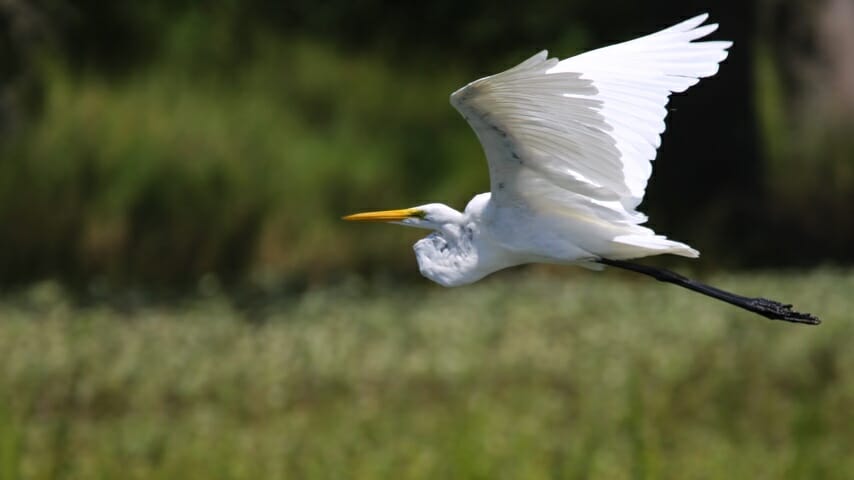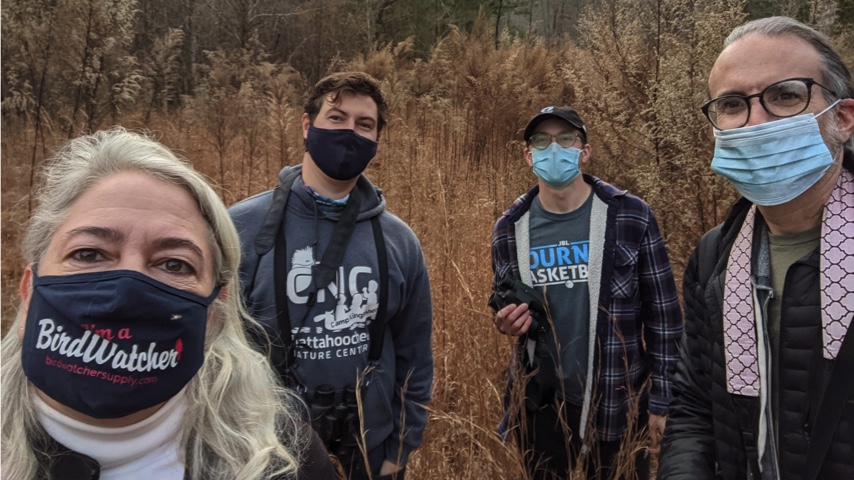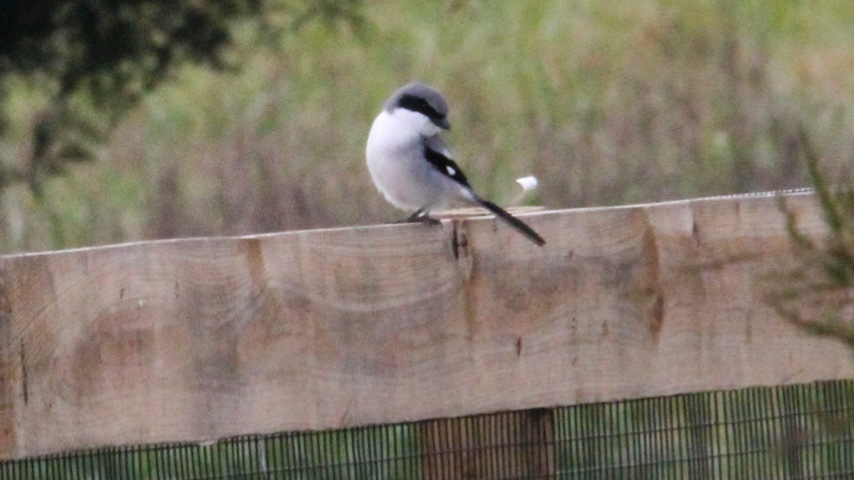The Christmas Bird Count: A 120-Year Tradition
Photos by Josh Jackson; group photo by Roseanne Guerra
In the late 1800s, wealthy men throughout North America celebrated Christmas with a competition to see who could shoot the most birds. It didn’t matter that most were too small to eat or to have any value to the hunter; they all counted toward your tally. It was attitudes like this, along with the clearing of old-growth forests, that led to the extinction of birds like the Carolina Parakeet—yes, we used to have a native parakeet here in the Southeast.
On Christmas Day of 1900, ornithologist Frank Chapman decided to dial back the killing and organized fellow bird enthusiasts in the U.S. and Canada to count our feathered friends instead of shoot them. The annual Christmas Bird Count was born.
Twenty-seven volunteers tallied more than 18,000 individual birds that first day, representing 90 different species. With 247 counts completed so far in the weeks surrounding Christmas 2020, birders have tallied nearly 7 million birds in what’s become the longest running community science project in the world. This year, I was among them.
The Sunday before Christmas I was up and out of the house by 6:30am in order to be in Peachtree City, Georgia, by sunrise for my first Christmas Bird Count. All over the Western Hemisphere, teams spend the day searching for birds in their designated area within predetermined circles 15-miles in diameter. We had 25 volunteers spread out in Atlanta’s southern suburban sprawl. Since I’ve only just begun learning how to identify birds this year, I was paired with three more experienced birders—Wes, Roseanne and Gabe—and we were assigned “Area 4” near the town of Senoia, where The Walking Dead is filmed. It was a comparatively dry area with no significant water features and no birding hotspots, according to the eBird app, which helps track birds throughout the year. But we started off well at Roseanne’s brother’s house in a fly-in community, where each resident has a small plane on a flat grassy airstrip.

We counted 33 species before breakfast including a pair of Blue-headed Vireos, and I quickly gathered just how much I have to learn about birding by ear. My three companions were all adept at hearing some far-off chip and knowing exactly what made it.
After some of Dale’s hearty breakfast casserole, we ventured down a wooded path to our area’s biggest pond. There were no ducks, but we did startle a Great Blue Heron. We also got most of the common songbirds we were missing—except strangely no Brown Thrasher. Our state bird was proving unusually shy today. We heard there was an abandoned barn on the property with the roof partially torn off by a storm and had visions of stumbling across a rare Barn Owl, but the structure we found looked much too new. I did see my first raptor of the day, a Red-tailed Hawk, along with both local vultures.
Wes had arrived in Coweta county in the pre-dawn to listen for owls and recorded a Great Horned Owl and an American Woodcock for the team outside a dairy farm. We returned the barn in the afternoon, but no one we saw could give us permission to bird near the barns, so we passed on seeing any House Sparrows and just took a look at the large open field from the road, spotting Killdeer and Eurasian Collard-Dove. It was the neighborhood across the street, though, that gave me my only new “lifer” of the day, a Loggerhead Shrike sitting in a tree in someone’s front yard. It was a new state bird for Roseanne, who’d seen them in Florida but never Georgia, and a new county bird for Wes, who’s trying to see 100 species of bird in every one of Georgia’s 159 counties. He started the day with around 90 for Coweta and picked up a few more during our count.

Next up was a large undeveloped piece of property filled with dozens of Savannah Sparrows. Here we saw an American Kestral high up in a tree and a Northern Harrier flying low in the distance. Wes also picked out an American Pipit calling out as it flew overhead. My favorite moment, though, was Gabe spotting a trio of Fox Squirrels, including one with jet black coloration. They wouldn’t be the last cool mammals we’d come across while searching for birds.

The “wetlands” area we had on our itinerary would be a bit quiet with just eight species observed, but even here we picked up a new bird with a Belted Kingfisher making quite a racket. And looking on a satellite map we could see a bigger pond not far away and a way to get to it, though it involved tromping straight through some dense vegetation and regularly disentangling ourselves from brambles. I had so many hitchhikers by the time we got to the lake, I could have planted my clothes and grown a whole new forest. But leaving the beaten path proved worthwhile as we saw a flash of white before even getting to the pond—a Great Egret! Plus Gabe spotted a pair of female Hooded Mergansers, our only ducks of the day. Once again, though, the mammals upstaged the birds with a River Otter swimming across the far side of the pond and a Beaver dam brimming with activity. The roof was partially caved in, and we could see a whole family of the furry brown creatures milling around inside.
We had one more partially developed neighborhood on the list with the promisingly named roads like Walden Pond Trail. Here we picked up Common Yellowthroat, Dark-eyed Junco, Purple Finch and—finally!—Brown Thrasher.
Dusk was quickly approaching and we decided to stop by the horse farm on the map. As we pulled into the driveway with our caravan of vehicles (per Covid guidelines), the owners were a little surprised to see us. Once we explained what a Christmas Bird Count was, though, they were happy to host us, saying there were enough House Sparrows in the barn to drive them crazy. We quickly had to cross Mallard off our list, though, when they told us they were domestically raised (only wild birds count). And when we walked through the barns, the House Sparrows were no where to be found, likely roosted somewhere for the night. With the sun setting, we walked the horse trails, realizing what a great birding spot it would have been earlier in the day. In the near-dark, we heard—and then saw—our 65th and final new species of the day—a total of more than 700 individual birds. A pair of Winter Wrens were calling back and forth near a beautiful stream flowing through the property, another county bird for Wes. We all agreed that was a better bird to end the day on than boring invasive House Sparrows. We even got one more mammal of the day when a bat flew over our heads on the way back to our cars.
In a year of so much isolation, it was lovely to meet new people who could geek out about nature as much as me. My only regret is that our exhausting adventure couldn’t end in the normal gathering of the 25 volunteers for drinks and story-sharing. Covid turned that into a Zoom meeting instead.
Collectively, we found 94 species, tying the all-time record for the location, recorded in 1994 and 2018. And while some unusual birds were spotted, like a Virginia Rail at Nesmith Preserve and a female Common Goldeneye on Lake McIntosh, other species which used to be common in the area are now much harder to find. Previous counts would show dozens of Loggerhead Shrikes, but ours was the only one seen all day. Development has also resulted in a decline in Eastern Screech Owls and American Kestrals in the area, but the news has been better for Bald Eagles which have been regularly recorded since 2013, after years of being gone from the area.
I’d recommend volunteering for a CBC to anyone who enjoys birding. Your local Audubon chapter probably has all the details for your state. I’ll be doing one more Christmas Bird Count this weekend—this time in a patch of land that includes my own backyard.






































